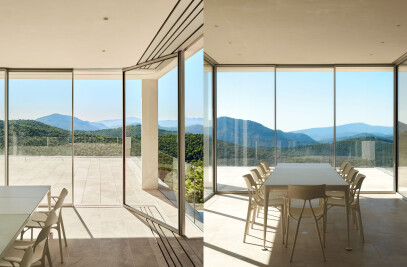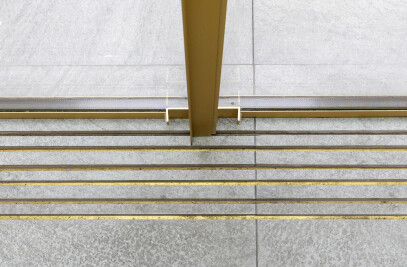Warsaw-based architecture studio Tremend has completed Dworzec Lublin, a new metropolitan station in Lublin, Poland, with distinctive openwork pillars holding aloft a decorative canopy roof. The station is at the core of the multidimensional Integrated Transportation Center infrastructure project in Lublin, the capital city of Lublin Voivodeship (a province in south-eastern Poland). A main transport hub in the center of the city, it is designed to be one of the most sustainable projects of its kind in the country.
Dworzec Lublin connects urban, regional, and national transport networks. Its canopied platforms include terminals for road transportation; underground parking is available for cars as well as charging stations for electric cars and bicycle parking. The city square and adjacent green spaces have been revamped as part of the project.
The new station is in the direct vicinity of the Lublin Główny Railway Station — Lublin Central Railway Station — a listed 19th century building. When conceiving the new station (replacing an architecturally neglected 1970s bus station), Tremend believed “the design not only had to accommodate the most optimal and functional traffic management systems but also blend in with the urban and architectural context of the place.” A focus on regeneration and the reactivation of the surrounding post-industrial area were also key considerations for the studio.
Tremend’s concept for the new station is based on a modernist-style pavilion, one whose architecture contrasts with Lublin’s historic central railway station in a complementary fashion. The openwork pillars, with their treelike form, are distinctive parts of the station’s steel structure — the canopy roof augments its overall decorative character. Together, they give the structure a truly unique architectural expression. The station building has two floors, an accessible public green roof, and underground parking.
“The underlying idea behind the project was to create a facility that will be an example of a public investment in the spirit of sustainable architecture,” says Tremend. Minimizing a project’s carbon footprint is a priority for the studio. Architect Magdalena Federowicz-Boule, Tremend’s owner, adds: “The implementation of technologies and materials that are environmentally friendly and limit the carbon footprint of constructions make it one of the most ecologically sound and energy efficient buildings of its kind in Poland.”
Tremend included a number of energy efficient and environmentally friendly design measures in the project:
The station’s glazed facades help to reduce energy consumption and a low-emissivity concrete is used in its construction.
Smart and energy efficient lighting help to reduce energy consumption.
The “smart bus shelter canopy” is clad in glass with integrated photovoltaic cells — shielding 43 bus stands, these darken in bright sunlight, affording both shade and shelter as well as harvesting solar energy to power the station.
Approximately 300 square meters (3,229 square feet) of the outdoor surface area is covered by vegetation and a rainwater harvesting system is used for irrigation and flushing toilets. A green roof is accessible to the public.
Ventilation systems have up to 80 percent heat recovery and an open atrium naturally ventilates the underground carpark (via a chimney effect).
HVAC systems are energy efficient and provide individual temperature control in different areas.
In passenger areas, radiant heating and cooling is driven by a cascaded heat pump system using 42 boreholes.
The new station received its first passengers in January 2024.
























































